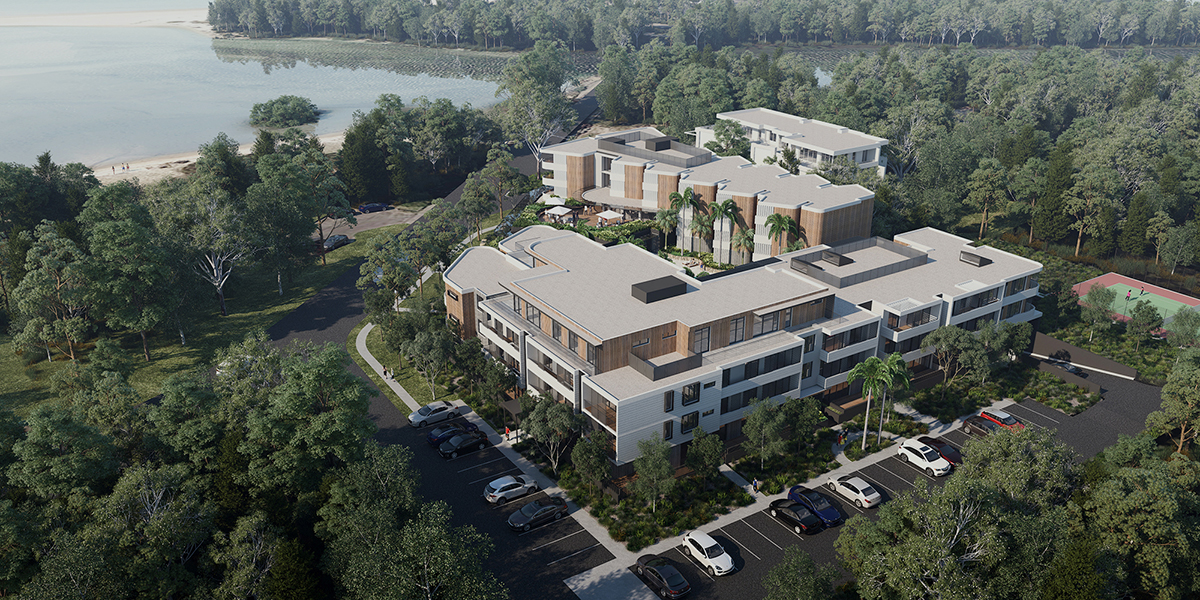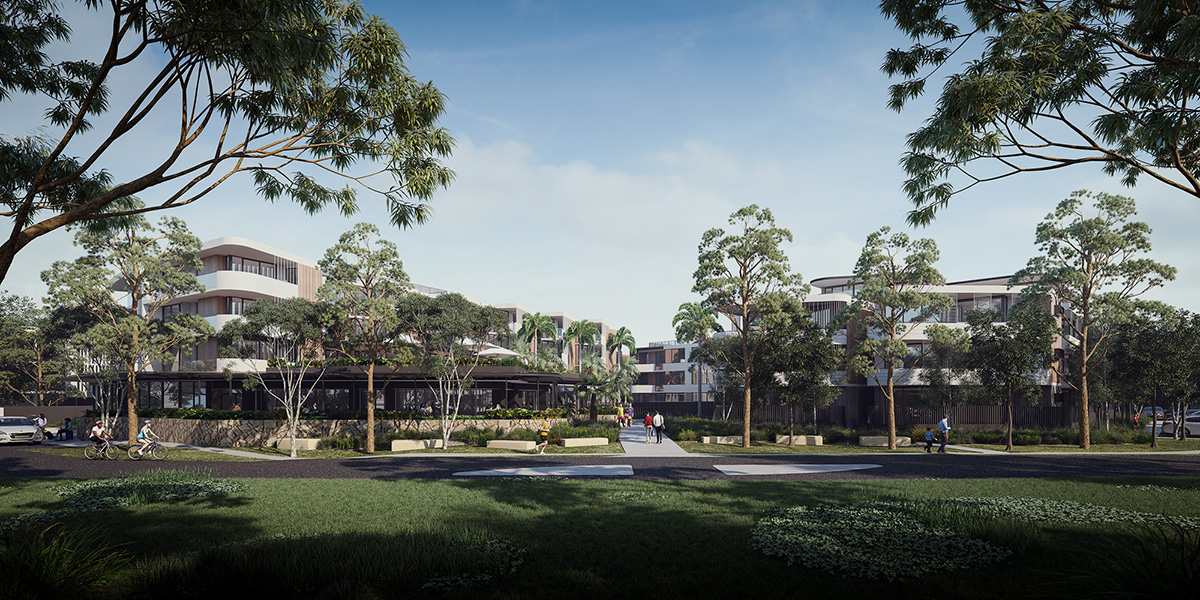I have often expressed the importance of context to architecture, and this project is a very good example. Arguably, if you had the relevant photography from street level and a drone, it would make sense to do a photomontage, however, when you do not have the time or budget, spending the time you do have making sure the surrounds work is an investment in the process. In a more urban area with a lot of surrounding houses this would not be achievable in 3D, you would need photos. Given the coastal nature of this project, I was able to replicate surrounds that did a good job illustrating context. Showing the project in relation to the ocean and river, and being able to render multiple views of a complete model, the client can see a lot more clearly the design intent and the vision of the project.
This is another example of linking a working Revit file via .FBX, and keeping all the planting, entourage and surrounds well organised on separate layers. This design can be updated repeatedly, keeping the materials, and able to re-render all the views with very little fuss. These images are not quite at a marketing level as the time of day and mood might want to be better, but these hold very well throughout the long design period, and act like working renders rather than one off images. I know that if design changes happen I can very easily update and reissue making this cost effective and useful to my client, and I think that’s a tremendous benefit.
Quick tip on creating context, be sure to use a good scatter plugin like Forest Pro to distribute your planting, and do not shy away from adding multiple tree species. The more variation you can create, the better the result will be, as not doing so can leave the image repetitive. It takes a little while to get right, but is an investment when you consider using this file over multiple iterations of design, it’s better to do it once as well as you can.


